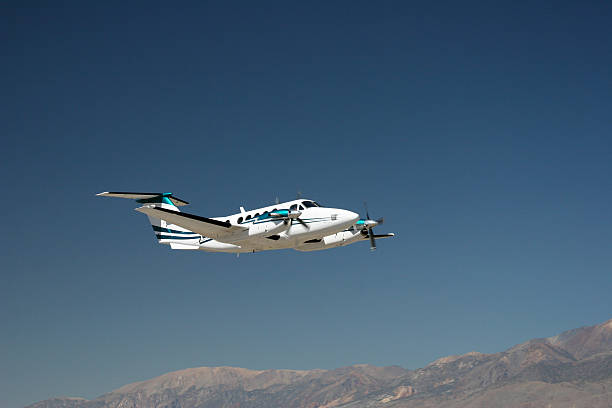How to Arrange an Emergency Organ Transport Flight Within Hours

When every second counts in organ transplantation, the difference between life and death often comes down to logistics. Emergency organ transport flights represent one of the most critical components of the modern transplant system, requiring precise coordination, specialized equipment, and immediate action. This comprehensive guide will walk you through the essential steps to arrange an emergency organ transport flight within hours, potentially saving lives through swift and efficient planning.
Understanding the Critical Nature of Organ Transport
The statistics surrounding organ transplantation underscore the urgency of efficient transport systems. According to the United Network for Organ Sharing (UNOS), approximately 17 people die daily while waiting for organ transplants in the United States alone. Time is the enemy in organ transplantation – organs have strict viability windows that determine their success rates:
- Hearts: 4-6 hours maximum viability
- Lungs: 4-6 hours maximum viability
- Liver: 12-15 hours maximum viability
- Kidneys: 24-36 hours maximum viability
- Pancreas: 12-15 hours maximum viability
These narrow timeframes mean that transport logistics must be flawlessly executed, often across vast distances and through challenging weather conditions.
The Emergency Organ Transport Ecosystem
Key Players in the Process
Understanding who's involved in emergency organ transport is crucial for effective coordination:
Organ Procurement Organizations (OPOs): These federally designated organizations coordinate organ recovery and distribution within specific geographic regions. The U.S. has 58 OPOs managing the entire transplant process.
Transplant Centers: Hospitals with specialized transplant programs that have the capability to perform organ transplant surgeries.
Aviation Service Providers: Specialized medical aviation companies equipped with aircraft capable of maintaining proper organ preservation conditions during transport.
Medical Teams: Specialized personnel including transplant coordinators, perfusion specialists, and medical couriers trained in organ transport protocols.
Step-by-Step Guide to Arranging Emergency Organ Transport
Step 1: Immediate Assessment and Documentation (0-15 minutes)
The moment an organ becomes available, several critical pieces of information must be gathered and documented:
Origin Details:
- Exact location of the donating hospital
- Available runway specifications and aircraft limitations
- Current weather conditions at departure location
- Ground transportation time from hospital to airport
Destination Requirements:
- Recipient hospital location and nearest suitable airport
- Receiving team availability and preparation status
- Ground transport arrangements at destination
- Any special handling requirements for the specific organ
Organ-Specific Information:
- Type of organ(s) being transported
- Preservation method (cold storage, perfusion machine)
- Estimated viable transport window
- Any special equipment or monitoring requirements
Step 2: Flight Planning and Aircraft Selection (15-30 minutes)
Aircraft Requirements:
The choice of aircraft depends on distance, weather conditions, and specific medical requirements. Options include:
- Helicopters: Ideal for short distances (under 150 miles) and when airport access is limited
- Turboprop Aircraft: Suitable for medium distances with good airport access
- Light Jets: Best for longer distances requiring speed and weather capability
- Commercial Airlines: Used for extremely long distances when time permits
Critical Planning Factors:
- Range: Ensure aircraft can complete the mission without refueling stops
- Speed: Calculate total transport time including ground transfers
- Weather Capability: Assess aircraft's ability to operate in current conditions
- Medical Equipment: Verify aircraft can accommodate required preservation equipment
- Crew Requirements: Ensure medical personnel can accompany the transport
Step 3: Regulatory Compliance and Documentation (20-40 minutes)
Emergency organ transport flights often require expedited regulatory approvals:
FAA Coordination:
- File emergency flight plans with Air Traffic Control
- Obtain priority handling and routing clearances
- Coordinate any special use airspace requirements
- Ensure compliance with medical equipment regulations
International Considerations:
For cross-border transports, additional requirements include:
- Customs pre-clearance arrangements
- Medical equipment import/export documentation
- Immigration fast-track procedures for medical personnel
- Embassy or consulate notifications when required
Step 4: Ground Coordination and Logistics (30-60 minutes)
Seamless ground operations are essential for maintaining the cold chain and minimizing transport time:
Departure Arrangements:
- Coordinate ambulance transport from hospital to airport
- Arrange expedited security screening for medical teams
- Ensure proper handling of medical equipment and preservation systems
- Establish communication protocols between all parties
Arrival Preparations:
- Pre-position ground transportation at destination airport
- Coordinate with receiving hospital for immediate transfer
- Establish backup transportation options
- Verify operating room availability and surgical team readiness
Step 5: Execution and Monitoring (Throughout Transport)
Real-Time Coordination:
- Maintain constant communication between aircraft, ground teams, and medical facilities
- Monitor organ preservation systems and environmental conditions
- Track flight progress and adjust ground logistics as needed
- Prepare contingency plans for weather delays or mechanical issues
Documentation and Tracking:
- Record all timing and temperature data for regulatory compliance
- Maintain chain of custody documentation
- Document any deviations from standard protocols
- Ensure proper insurance and liability coverage
Critical Success Factors
Technology Integration
Modern organ transport relies heavily on technology for coordination and monitoring:
GPS Tracking Systems: Allow real-time flight monitoring and ETA updates to receiving hospitals
Temperature Monitoring: Continuous recording of organ preservation conditions during transport
Communication Systems: Redundant communication capabilities ensuring constant contact between all parties
Database Integration: Connection to UNOS databases for real-time organ allocation and status updates
Weather Contingency Planning
Weather represents one of the most significant challenges in emergency organ transport. Statistics show that weather-related delays affect approximately 15-20% of organ transport flights annually. Effective contingency planning includes:
- Alternative Aircraft Options: Having backup aircraft with different weather capabilities
- Route Flexibility: Multiple routing options to avoid severe weather
- Ground Transport Alternatives: Long-distance ground transport capabilities when flight is impossible
- Extended Preservation: Understanding maximum viable transport times for different organs
Quality Assurance and Training
The complexity of emergency organ transport requires highly trained personnel and robust quality assurance programs:
Personnel Certification: All team members must maintain current certifications in organ transport protocols, aircraft safety, and medical procedures.
Regular Drills: Quarterly emergency response drills help maintain readiness and identify process improvements.
Performance Metrics: Tracking key performance indicators including transport times, organ viability rates, and communication effectiveness.
Costs and Financial Considerations
Emergency organ transport flights represent a significant financial investment, with costs varying widely based on distance, aircraft type, and complexity:
- Helicopter Transport: $3,000-$8,000 for regional flights
- Turboprop Aircraft: $5,000-$15,000 for medium-distance transport
- Light Jet Transport: $10,000-$25,000 for longer distances
- Commercial Airline: $2,000-$10,000 plus coordination fees
These costs are typically covered through a combination of insurance, hospital funding, and specialized transplant funding programs. Many insurance providers have specific provisions for emergency organ transport, recognizing the life-saving nature of these flights.
Regulatory Framework and Compliance
The organ transport industry operates under strict regulatory oversight to ensure safety and effectiveness:
Federal Aviation Administration (FAA): Regulates all aviation aspects including aircraft certification, pilot qualifications, and flight operations.
Department of Health and Human Services: Oversees organ allocation policies and transport standards through UNOS and the Organ Procurement and Transplantation Network (OPTN).
International Standards: Cross-border transports must comply with International Civil Aviation Organization (ICAO) standards and destination country requirements.
Emerging Technologies and Future Trends
The organ transport industry continues to evolve with new technologies and approaches:
Drone Technology: Experimental programs are testing unmanned aerial vehicles for short-distance organ transport, potentially reducing costs and improving response times.
Perfusion Systems: Advanced portable perfusion machines allow extended organ preservation during transport, expanding viable geographic ranges.
Artificial Intelligence: AI-powered logistics systems are being developed to optimize routing, predict delays, and improve overall coordination efficiency.
Blockchain Technology: Emerging applications in chain of custody documentation and regulatory compliance tracking.
Case Study: Successful Emergency Transport
A recent successful emergency organ transport illustrates the importance of proper planning and execution. A 45-year-old patient in Miami required an emergency heart transplant, with a suitable organ becoming available in Seattle – a distance of over 2,700 miles.
The coordination team executed the following plan:
- T+0 minutes: Organ availability confirmed, initial flight planning begun
- T+30 minutes: Gulfstream G550 aircraft positioned and crew briefed
- T+45 minutes: Medical team departed Seattle with preserved heart
- T+4 hours 15 minutes: Aircraft landed in Miami with organ integrity maintained
- T+5 hours 30 minutes: Patient successfully received transplant
This case demonstrates how proper planning and execution can successfully transport organs across vast distances within critical time windows.
Conclusion
Arranging an emergency organ transport flight within hours requires a combination of careful planning, technological integration, regulatory compliance, and flawless execution. The stakes couldn't be higher – human lives depend on the seamless coordination of complex logistics under extreme time pressure.
Success in emergency organ transport comes from understanding that every minute matters. From the initial notification of organ availability to the final delivery to the transplant center, each step must be executed with precision and efficiency. The investment in specialized aircraft, trained personnel, and advanced monitoring systems pays dividends in the form of successful transplants and lives saved.
As technology continues to advance and processes become more refined, the organ transport industry will undoubtedly become more efficient and effective. However, the fundamental principles of careful planning, clear communication, and rapid execution will remain the cornerstones of successful emergency organ transport operations.
For healthcare organizations, aviation service providers, and transplant coordinators, mastering these processes isn't just about operational efficiency – it's about providing hope and second chances to patients who need them most. In the world of organ transplantation, time truly is life, and emergency transport flights serve as the critical bridge between donor and recipient.
References
- United Network for Organ Sharing (UNOS) - Official Statistics and Data
- Federal Aviation Administration - Medical Transport Regulations
- Organ Procurement and Transplantation Network (OPTN) - Transport Guidelines
- Association of Air Medical Services - Emergency Transport Standards
- International Association for Healthcare Central Service Materiel Management - Transport Protocols















